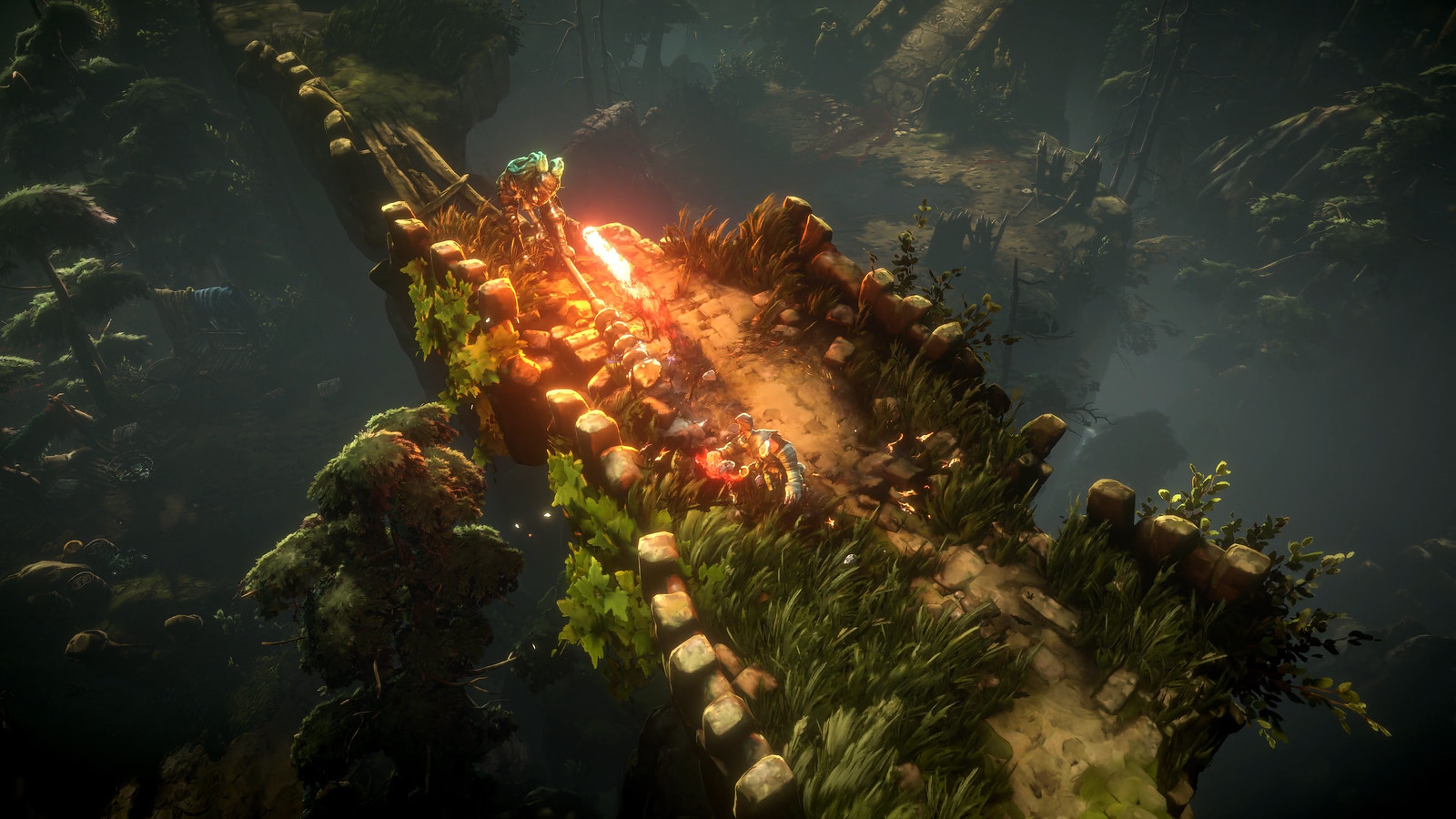You wake up as the survivor of a shipwreck, with nothing more than the ragged clothes on your back to your name. A short trek away lies the dying captain of the vessel, who mentions the place he was trying to reach– a place called Sacrament. And so, your long and difficult journey begins.
No Rest for the Wicked is the newest game from Moon Studios, creator of the Ori series. First announced at last year’s Game Awards, this PS5-bound action RPG is as visually luscious as their previous work but wrapped in a darker, mature narrative. We sat down with the team for an early preview of the game to discover more about its central gameplay mechanics and world design.

In the harsh world of No Rest, suffering comes on two fronts: political maneuvering by well-connected royals and religious figures in the wake of the King’s death, and a horrific curse called the pestilence that transforms the humans it claims into unholy abominations. As all this happens, the populace is turning to more desperate and illicit means of survival.
A world of great beauty and unspeakable suffering
Moon Studios is well known for its ability to create compelling worlds and stories, and No Rest for the Wicked explores new territory for the developer. “After having made both Ori games, our next goal was to create our own huge fantasy universe,” says Thomas Mahler. “With Ori, we always relied on using allegory. We told stories that touched people, but we used fantasy creatures that, in essence, had to deal with very human problems. This time, we wanted to actually use humans and craft a Shakespearian tale with very strong human themes like family, trust, betrayal, comradery, and so on.”

To that end, No Rest offers up a very different feel from that of Ori’s warm, inviting natural environments: dilapidated, crumbling fortresses, barren, scarred landscapes, and vicious-looking foes — human and non-human alike — populate the tumultuous land of Isola Sacra. With each sword-slash, you see blood and viscera, illuminating the brutal, painful reality of life here.
Yet among it all is a strange and compelling beauty, captured in the gorgeous stylized visuals Moon Studios specializes in, the studio seemingly not missing a step with the switch from 2D to 3D: every frame looks like a painting come to life.
“We’re just very much set in not being yet another studio that tries to go for a photorealistic style,” Mahler continues. “We think paintings age less quickly than trying to pursue photorealism. When I see a Caravaggio painting, I’m still amazed by what he was able to accomplish just using oils 500 years ago.”
Humble beginnings

Starting up the game, you have next to nothing on your person. That changes quickly as you discover a worn one-handed sword and some discarded tools, likely the scraps the nearby bandits didn’t bother looting from their victims. Taking up the blade and using some found materials to cook up a basic stew, you prepare to fight through the area under the bandits’ control to try and reach Sacrament.
There are many ways to engage foes–barging in head-first, or trying to get the jump on them with a sneaky ambush–but once you engage them, you’ll need to fight smartly, as your stamina meter makes sure your every move counts. A careless sword swipe, a bad dodge, a failed parry, or a broken guard can quickly get extremely painful. If you’re in a pinch, a well-placed Rune attack might help you turn the tables, but at the cost of focus.
Fortunately, you have a variety of gear on your side–which you’ll either find, buy, or craft– and a stat-building system that lets you invest points where you choose on level up. Unlike many action RPGs, which have you pick a class very early and restrict your gear based on that choice, you grow into a class in No Rest for the Wicked more organically.

“We just wanted to give players an extremely diverse set of gear they can find to fulfill all their fantasies of the characters they’d like to play within an RPG,” notes Mahler. “We start the player out with pretty simple movesets, but as they progress further and further, they’ll be able to advance those movesets, and combine various combos, special attacks, and spells together. As for leveling and stat-building, in general, our methodology was that we wanted things to be as active as possible. We believe that players want all progress to be felt instead of just seeing some numbers go up that might not immediately affect your playstyle.”
Shaping your adventure
The overhead view of the action helps the environments in No Rest for the Wicked feel epic and atmospheric while also giving you subtle hints about out-of-the-way paths or hidden nooks and crannies. Background objects may be more destructible than first assumed, often yielding some precious loot as a reward for our experimentation. Pushing against odd-looking walls and bits of geometry that seemed a bit off may reveal passages filled with valuable treasures–and sometimes also their guardians.

Besides combat gear, there are plenty of other items to be acquired–bits of food for cooking, wood and ore for crafting, and assorted other sundries. With tools like an axe or pickaxe, we can chop down trees and harvest ore–though you’ll want to make sure the area is clear from hazards first. Otherwise, a flaming projectile to the face might interrupt your gathering session.
The harvesting and crafting elements become more and more pronounced as the game progresses, and eventually, you can choose to engage in the reconstruction of Sacrament. “We have so many different mechanics all mashed into this one game, which we then had to all make work together, “explains Mahler. “The idea is simple: We create certain needs for players and then we provide a lot of tools on how to fulfill those needs. For example, if players choose to farm and engage in housing, crafting, etc., they’ll then be able to take the outcome of those interactions back into the battle.”
“The ultimate goal here is once again to fulfill that RPG fantasy and ultimately craft a game that is not just about slaying enemies. We want you to have a diverse set of things you can do at all times. Tired of being in combat? Well, go and get some resources instead. Or go and help rebuild Sacrament. Or engage in housing and build yourself a dream home that constantly produces resources for you. Or go fishing. There should be no end of ‘Or’s’ in this game.”

The first few steps on a long road
The demo ended with a boss battle against the pestilence-infected Warrick, who has been warped and transformed beyond recognition. It’s not an easy struggle, but learning the parry cues makes the fight more manageable, turning the corrupted creature into a sitting duck for a precious few seconds. So ends the beginning of what’s likely to be a very, very long journey.
Thomas Mahler hopes players will enjoy the game his team has spent many moons crafting. “During development, we looked at what current ARPGs offer players. Our goal was to take all the aspects from all these games we love, mix that together, and create a new recipe that ultimately becomes the game we always wanted to play!”












 English (US)
English (US)